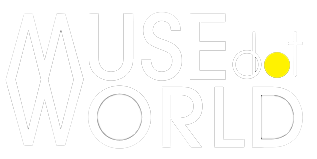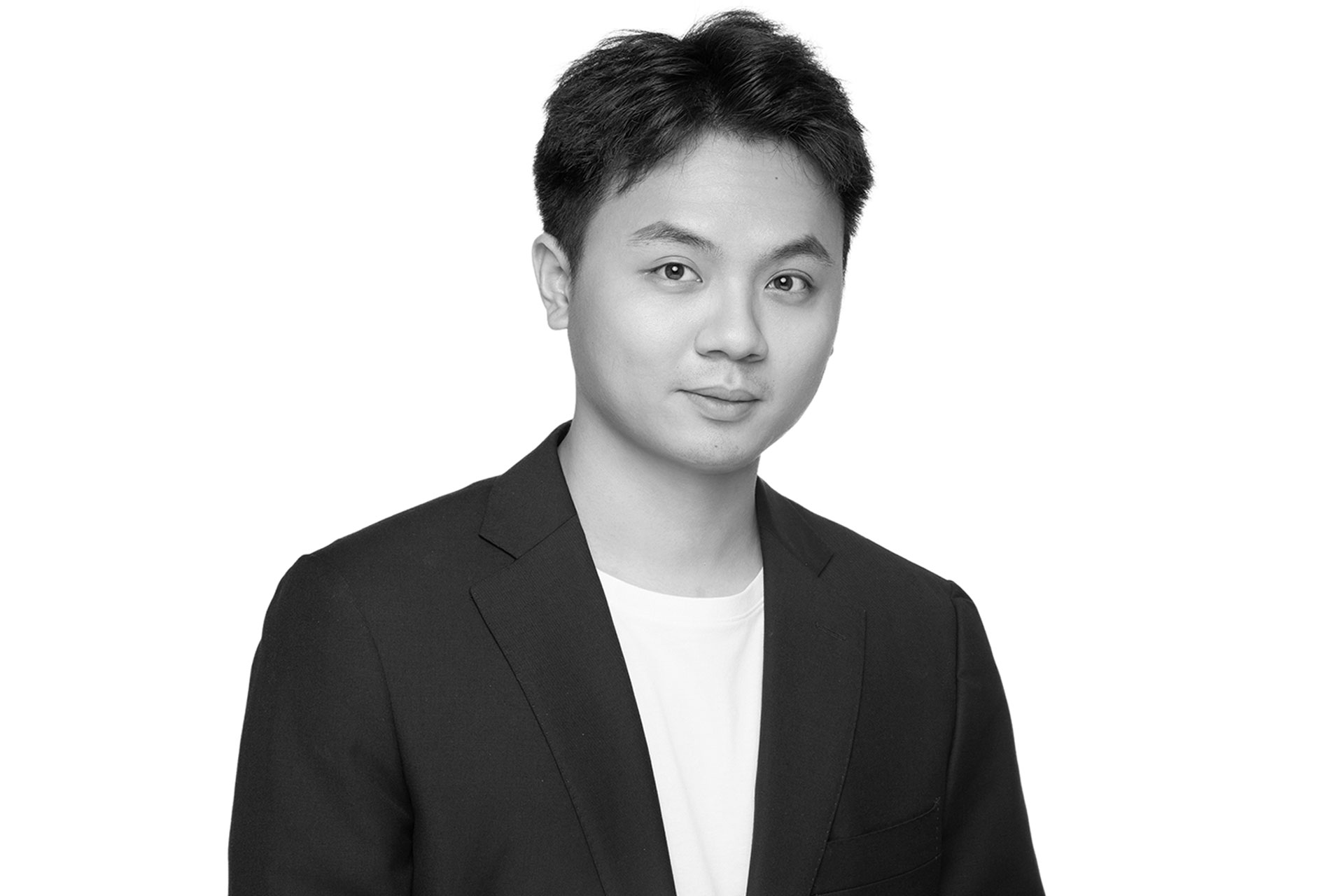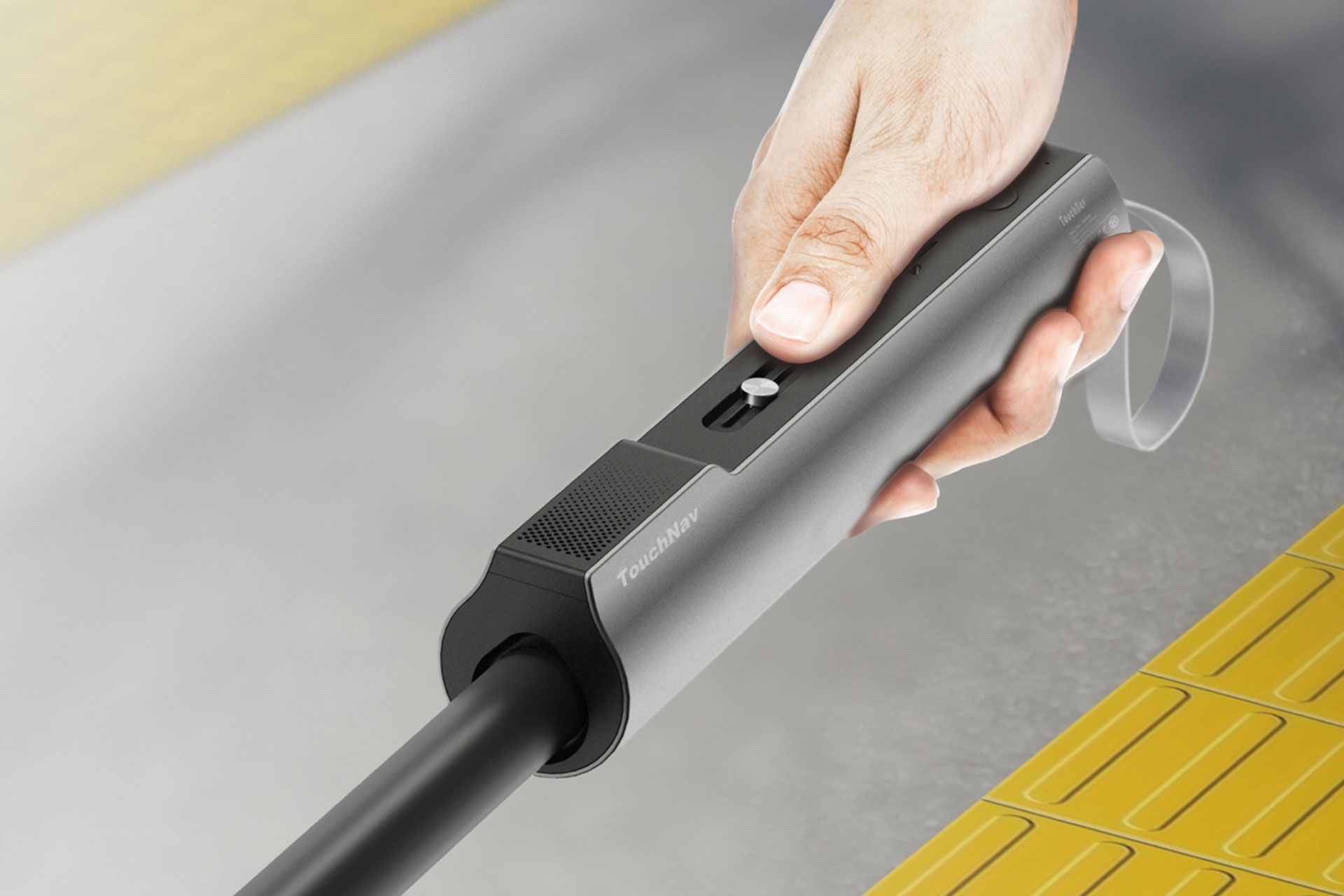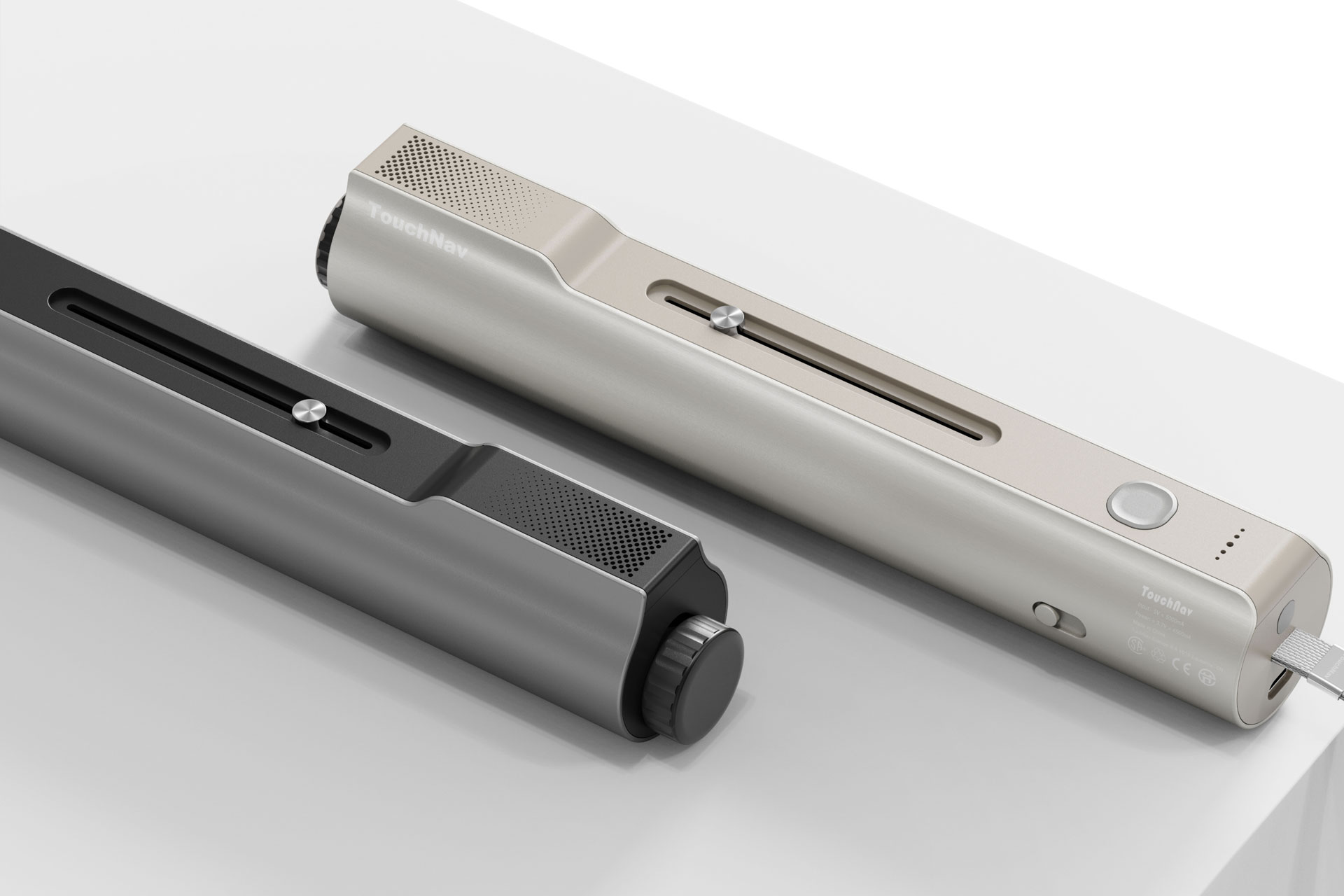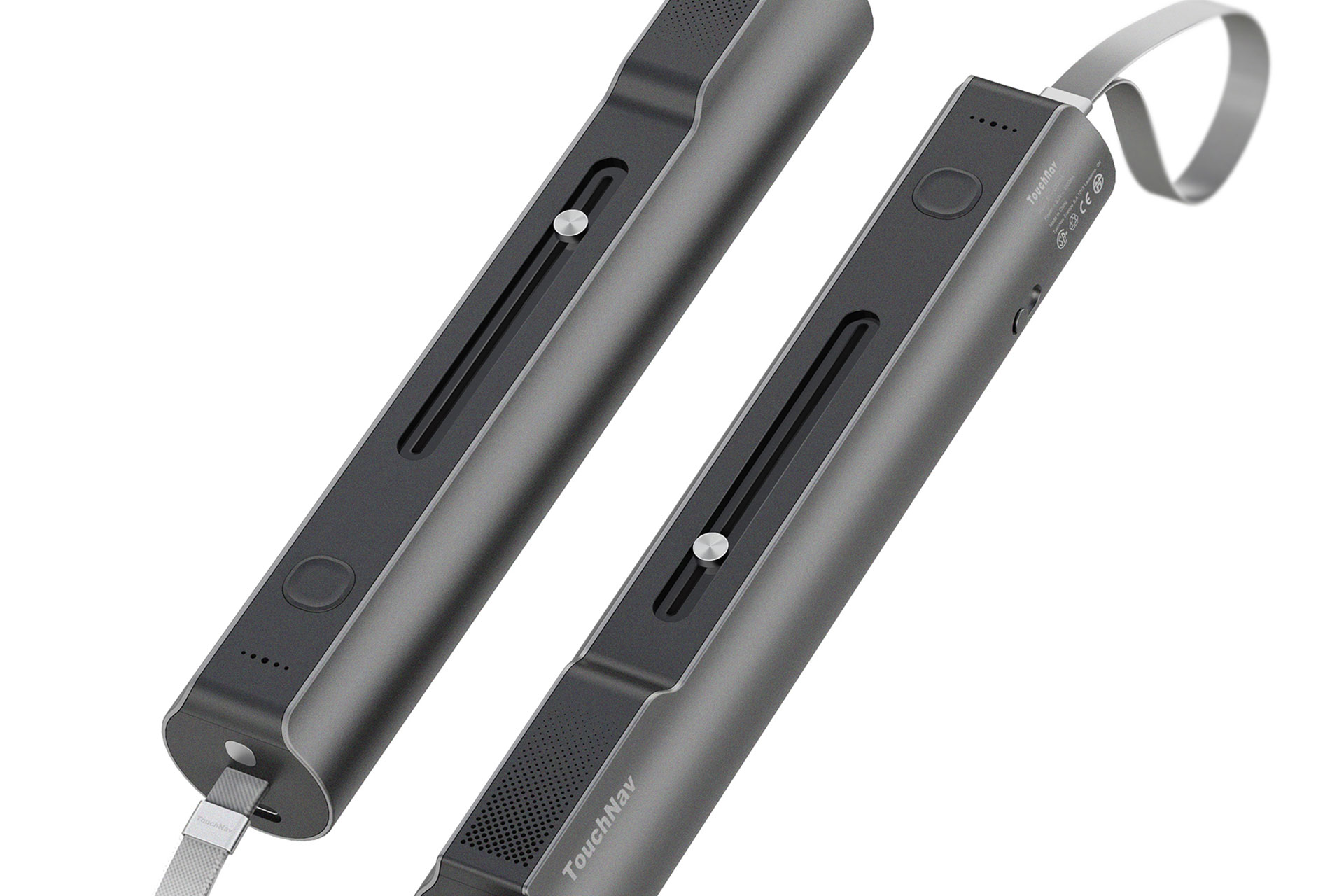Leading with Design: Jifeng Shen and the TouchNav Project

Experience the Future: The Nexus Journey Through Light, Sound, and Digital Innovation
January 22, 2025
The Success Story of Ascend Agency
January 23, 2025Jifeng Shen
Jifeng Shen, project leader of TouchNav, is a dedicated practitioner in industrial and interaction design. His work focuses on leveraging technology to better serve special groups. TouchNav exemplifies his commitment to applying design management principles to create meaningful social impact.
I am Jifeng Shen, the project leader of TouchNav. As a practitioner in industrial design and interaction design, I have been committed to exploring how technology can better serve special groups. Over the past few years, I have conducted in-depth research in the field of accessible design, with a particular focus on the needs of the visually impaired.
In our interactions with visually impaired friends, my team and I observed the limitations of existing navigation aids - over-reliance on voice prompts not only interferes with users' perception of their surroundings but also increases cognitive load. This discovery prompted us to think: how can we develop a more intuitive and less intrusive way of navigation? Through in-depth user research and repeated design iterations, we developed TouchNav, a navigation cane based on tactile feedback.
As the project leader, what makes me most gratified is seeing that this project has not only received recognition in the design field but more importantly, positive feedback from visually impaired users. When I see that our design can effectively help the visually impaired improve their independence and sense of security in travel, I deeply feel that all these efforts are worthwhile.
I've always been passionate about design and technology, but what really made me decide to enter the creative field was seeing how technological innovation could truly change people's lives. Especially during my studies in industrial design, I deeply realized that design is not just about aesthetics, but more importantly about solving real problems.
Before developing the TouchNav project, I had the opportunity to interact with some visually impaired friends. Their stories made me realize that as designers, we have both the responsibility and ability to improve the quality of life for special groups through innovative design. I believe that true innovation should have social value. It is this belief that drives me to constantly explore how to transform complex technology into simple, practical solutions.
As a Master's student in Design Management at Macau University of Science and Technology, I've been fortunate to lead the TouchNav project, which perfectly aligns with my academic and professional interests. The program has provided me with a comprehensive understanding of how design management principles can be applied to create meaningful social impact.
During my studies, I've learned that effective design management goes far beyond just creating products - it's about orchestrating the entire innovation process from conception to implementation. This understanding has been instrumental in developing TouchNav, where we've had to balance user needs, technological capabilities, and project resources.
Our project team represents a diverse blend of expertise, bringing together industrial designers, interaction specialists, engineers, and user researchers. This interdisciplinary approach has been crucial in addressing the complex challenges of creating an accessible navigation solution for the visually impaired. As project leader, my role has been to ensure that these different perspectives work in harmony toward our common goal.
The academic environment at MUST has provided an excellent foundation for applying design management theories to real-world challenges. We've utilized design thinking methodology, implemented rigorous project management practices, and employed sophisticated user research methods. This project forms a significant part of my master's research, demonstrating how design management principles can drive innovation in accessible technology.
TouchNav represents more than just a product development project - it's a practical application of design management principles to create social value. By focusing on user-centered design and leveraging our team's diverse capabilities, we've been able to develop a solution that genuinely improves the independence and quality of life for visually impaired individuals.
To me, creativity is about transforming complex challenges into meaningful solutions through innovative thinking. It's not just about generating novel ideas - it's about deeply understanding user needs and finding unique ways to address them.
In developing TouchNav, we demonstrated this by creatively transforming navigation data into tactile feedback, making spatial information more intuitive for visually impaired users. This required thinking beyond traditional boundaries and combining insights from various fields - industrial design, interaction design, and accessibility research.
I believe the most powerful creativity emerges from working within constraints. The challenge of designing a navigation system without visual feedback pushed us to explore new possibilities, ultimately leading to more intuitive solutions. Most importantly, I've learned that creativity isn't about innovation for its own sake - it's about creating meaningful impact that genuinely improves people's lives.
Through TouchNav, I've come to understand that creativity is most valuable when it's guided by empathy and a deep commitment to solving real human needs. It's a powerful tool for positive change when focused on understanding and serving user needs while pushing the boundaries of what's possible.
To me, a truly "creative" design harmoniously combines innovation and meaningful impact. Creative ideas emerge from deeply understanding real problems and finding unique, yet practical solutions.
I believe creative design is about transforming complexity into simplicity while maintaining functionality. It's not just about being different or novel - it's about making something genuinely better and more accessible. Creative solutions often challenge conventional thinking, but they must always serve a clear purpose and enhance the user experience.
Most importantly, creative design should bridge the gap between what exists and what could be. It requires balancing innovation with practicality, ensuring that new ideas actually improve people's lives rather than just being different for the sake of being different. When a design solution feels both surprising and obvious - that's when you know you've found something truly creative.
My creative design process follows a systematic yet flexible approach that puts user needs at the core of every decision. It begins with a deep dive into understanding the problem space through comprehensive user research.
This initial phase is crucial as it involves both quantitative data collection and qualitative insights gathering through user interviews, field observations, and empathy building exercises. By immersing ourselves in the user's world, we can truly understand their challenges, aspirations, and unmet needs.
Next, I move into an exploratory phase where ideas flow freely through divergent thinking. This stage embraces cross-disciplinary collaboration, bringing together different perspectives and expertise. I believe the most innovative solutions often emerge from the intersection of different fields and viewpoints. Using various design thinking tools and methodologies, we generate multiple potential solutions without immediate judgment, allowing creativity to flourish.
The development phase transforms promising ideas into tangible prototypes. I'm a strong advocate for rapid prototyping and early testing, as it allows us to quickly validate assumptions and gather real user feedback. This iterative process is crucial - each round of testing provides valuable insights that help refine and improve the design. Sometimes, this means taking a step back or pivoting in a new direction based on user responses.
My favorite part of the creative process is the discovery phase, where initial ideas transform into meaningful solutions through user research and experimentation. This stage is particularly exciting because it combines analytical thinking with creative exploration.
I find great joy in conducting user interviews and field observations, as these moments often reveal unexpected insights that challenge our assumptions. There's something deeply rewarding about those "aha" moments when you discover a unique perspective or uncover a hidden user need that completely shifts your understanding of the problem.
What makes this phase especially fascinating is its unpredictable nature. You might start with one hypothesis but end up discovering something entirely different that leads to a more innovative solution. It's like being a detective, piecing together clues from user behaviors and feedback to uncover the real story.
My creative style is characterized by a thoughtful blend of analytical problem-solving and human-centered innovation. I believe in finding the sweet spot where rigorous research meets intuitive design solutions.
The main characteristics of my approach can be summarized in three core principles:
First, I prioritize empathy-driven design. Before jumping into solutions, I invest significant time understanding user perspectives and experiences. This means going beyond surface-level observations to truly comprehend the emotional and practical needs of users.
Second, I embrace minimalist complexity - creating solutions that are simple to use yet sophisticated in their problem-solving. I believe the most elegant solutions often appear simple on the surface while addressing complex challenges beneath.
Third, I follow an evidence-based creative process. While I value intuition and creative inspiration, I always ground my design decisions in solid research and user feedback.
As a Chinese designer studying in Macau, I strongly believe that my cultural background significantly influences my creative process and design philosophy.
Chinese culture's emphasis on harmony and holistic thinking shapes how I approach design challenges. This mindset encourages me to consider not just individual elements, but how they interact within the larger system. The traditional Chinese concept of "中庸之道" (the doctrine of the mean) influences my design approach - finding balance between innovation and practicality, between form and function.
Macau's unique position as a bridge between East and West has also enriched my creative perspective. Studying here has exposed me to diverse cultural influences, combining Chinese traditional values with international design principles. This multicultural environment has taught me to appreciate different viewpoints and incorporate various cultural elements into my design solutions.
As the recipient of the 2024 MUSE Creative Awards, this recognition holds profound significance for me and my entire team at Macau University of Science and Technology. It validates our commitment to creating meaningful solutions for the visually impaired community.
This award is particularly meaningful because it recognizes not just our innovation, but also our dedication to solving real social challenges. TouchNav represents our vision of using design to make a tangible difference in people's lives. The award affirms that inclusive design can be both innovative and impactful.
For our team, this recognition serves as powerful motivation to continue pushing boundaries in accessible design. It also highlights the importance of user-centered design approaches in creating solutions that truly serve community needs.
TouchNav is a tactile navigation smart cane that we entered into the 2024 MUSE Creative Awards' Product Design category. We chose to submit this project because it represents a significant breakthrough in accessible design for visually impaired individuals.
What makes TouchNav unique is its innovative approach to navigation. Instead of relying solely on audio feedback, which can overwhelm users and interfere with their environmental awareness, we developed a tactile progress bar that allows users to intuitively sense distance and direction through touch. This solution addresses a critical challenge faced by visually impaired people during independent navigation.
We decided to enter this project because it demonstrates how thoughtful design can transform complex technology into an intuitive, user-friendly solution. The project reflects our commitment to human-centered design and social innovation.
The biggest challenge in developing TouchNav was finding the perfect balance between technological innovation and intuitive usability for visually impaired users. Converting complex navigation data into simple, meaningful tactile feedback required extensive experimentation and user testing.
A significant hurdle was developing a tactile feedback system that could effectively communicate spatial information without overwhelming users. We had to ensure that the feedback was both precise enough to be useful and simple enough to be instantly understood. This required numerous iterations and close collaboration with visually impaired users to refine the interaction.
Another major challenge was integrating advanced navigation technology into a traditional white cane without compromising its basic functionality. The device needed to remain lightweight, durable, and familiar to users while incorporating new features. We had to carefully consider every design decision to maintain this delicate balance.
Winning the MUSE Creative Awards has been transformative for both my academic research and design career. This recognition has validated our user-centered design approach and strengthened our commitment to developing accessible technology solutions.
The award has significantly enhanced the visibility of our work in the field of accessible design. It has created opportunities for meaningful discussions with other designers and researchers about inclusive design practices. This exposure has been invaluable in building connections within the design community and potentially expanding the impact of our work.
Most importantly, this recognition has reinforced our belief in the power of design to create positive social change. It motivates us to continue pushing boundaries in accessible design and exploring new ways to serve the visually impaired community.
As a designer, I'm constantly amazed by three key aspects of our industry that make it uniquely rewarding and dynamic.
First, the power of innovation and social impact deeply resonates with me. Our industry provides the remarkable opportunity to improve lives through thoughtful design solutions. It's incredibly fulfilling to see how our work can transform challenges into opportunities for positive change.
Design isn't just about creating aesthetically pleasing solutions; it's about addressing real social issues and making a meaningful difference in people's lives.
Second, I'm fascinated by the cross-disciplinary nature of our work. Design brings together experts from diverse fields - technologists, psychologists, sociologists, and more - creating a rich environment for innovation.
These collaborations often lead to unexpected breakthroughs and creative solutions that wouldn't be possible within a single discipline. The ability to learn from and work with professionals across different fields continues to enrich my perspective and approach to design.
Third, I deeply value the continuous learning and growth inherent in our industry. Design is constantly evolving, driven by new technologies, changing user needs, and emerging social challenges. Each project presents unique opportunities to expand our skills and knowledge. This perpetual state of learning and adaptation keeps our work exciting and meaningful, pushing us to continually improve and innovate.
China's creative industry holds a unique position in the global landscape, blending thousands of years of cultural heritage with rapid technological advancement. As a student in design management, I find this dynamic particularly fascinating. What truly sets China apart is its distinctive approach to innovation, deeply rooted in cultural philosophy.
Chinese design thinking emphasizes harmony , balance, and holistic perspectives, which differ fundamentally from Western approaches. These cultural values naturally influence how we approach design challenges and create solutions that resonate with users on a deeper cultural level.
In recent years, China has emerged as a leader in digital innovation, particularly in areas like mobile technology and artificial intelligence. This technological advancement, combined with our rich cultural heritage, creates unique opportunities for creative expression.
We're seeing exciting innovations that blend traditional craftsmanship with cutting-edge technology, creating solutions that are both culturally meaningful and technically advanced.
As a design student deeply engaged in emerging technologies and accessibility design, I envision several transformative trends shaping the creative industry over the next 5-10 years.
AI and human creativity will form a powerful symbiosis. Rather than replacing human designers, AI will become an invaluable tool that enhances our creative capabilities. We'll see AI assisting in rapid prototyping, generating design variations, and providing data-driven insights, while human designers focus on emotional connection, cultural nuance, and ethical considerations in design.
Inclusive design will move from being a specialty to becoming a fundamental requirement. The creative industry will increasingly recognize that designing for accessibility from the start leads to better solutions for everyone. We'll see more innovations that seamlessly integrate accessibility features into mainstream products, similar to how we approached TouchNav's design philosophy.
Sustainability and social responsibility will become central to creative practice. Designers will need to consider not just the immediate user experience, but also the long-term environmental and social impact of their creations.
As a design student who has experienced the journey of developing an award-winning project, I would offer three key pieces of advice:
First, focus on solving real problems that matter. Don't just create something because it looks innovative or trendy. Spend time understanding your users' genuine needs and challenges. The most impactful designs often come from deep empathy and thorough research. In our case, extensive interaction with visually impaired users led to insights that made TouchNav truly meaningful.
Second, embrace collaboration and feedback. Don't work in isolation. Seek input from users, mentors, and peers throughout your design process. Be open to criticism and willing to iterate based on feedback. The best solutions often emerge through collaborative effort and multiple iterations.
Third, document your design process thoroughly. When submitting for awards like MUSE, it's not just about the final product - it's about the journey. Record your research, sketches, prototypes, and user testing. Show how you arrived at your solution and what you learned along the way.
As a design management student, I highly value continuous learning and growth in the creative industry. Let me share some key recommendations for those looking to enhance their skills and knowledge in this dynamic field.
First and foremost, I believe in the power of interdisciplinary learning. While mastering design fundamentals is crucial, expanding your knowledge beyond traditional design boundaries is equally important. Take courses in business, psychology, and technology - these diverse perspectives will enrich your design thinking and problem-solving abilities.
Stay informed about industry trends by following leading design publications like Design Week, Core77, and Fast Company's Design section. These resources provide valuable insights into emerging trends and innovative approaches in the creative industry.
Practical experience is invaluable in skill development. Focus on building a strong foundation in design tools and software, but remember that these are just instruments - the real value lies in developing your problem-solving capabilities.
Engage in real-world projects whenever possible, as they provide the most authentic learning experiences. Document your design process and maintain a reflective practice, as this helps in understanding what works and what doesn't.
As a design student and creator of TouchNav, let me share a personal reflection that I haven't openly discussed before. What truly drives my passion for accessible design isn't just professional interest - it stems from a deeply personal experience.
During my early days in design school, I often questioned whether my work would ever make a meaningful difference. I was creating aesthetically pleasing designs, but they felt hollow, lacking real purpose.
The turning point came when I started working with visually impaired users. Their stories and challenges transformed my understanding of design's potential. I realized that true design innovation isn't about following trends or creating visually stunning work - it's about solving real human problems and improving lives. This revelation has fundamentally shaped my approach to design and my career path.
As a design student focusing on accessible technology, I've been profoundly inspired by Jony Ive, not just for his iconic product designs at Apple, but for his philosophy that great design should enhance human lives. However, my deepest inspiration comes from someone much closer to home - my professor at MUST, who showed me how design can bridge cultural boundaries and create social impact.
My professor's dedication to inclusive design and their commitment to understanding user needs fundamentally changed my perspective on design's purpose. They taught me that the best design solutions often emerge from deep empathy and careful observation, not just technical expertise. Their approach to combining traditional Chinese design principles with modern accessibility needs has significantly influenced my work on TouchNav.
This mentorship helped me understand that design isn't just about creating beautiful objects - it's about solving real human problems and improving lives. Their guidance has shaped not only my design philosophy but also my commitment to using technology for social good.
In my journey as a design student and through the development of TouchNav, I've learned that true success comes from staying committed to three fundamental principles.
First, always maintain a user-centered mindset. Success in design isn't about creating the most technologically advanced or aesthetically pleasing solution - it's about genuinely understanding and addressing user needs. Spend time with your users, listen to their stories, and let their experiences guide your design decisions. This deep understanding is what transforms good design into meaningful innovation.
Second, embrace collaboration and continuous learning. No significant achievement is the work of a single person. Be open to feedback, seek diverse perspectives, and never stop learning.
Whether it's from professors, users, teammates, or even competitors, every interaction offers an opportunity to grow and improve. In my experience at MUST, some of our best innovations came from collaborative efforts and being willing to challenge our assumptions.
Throughout my career, I have been dedicated to fostering the integration of art and technology, exploring the intricate interplay between the virtual and the real. I focus not only on technological innovation but also on emphasizing the uniqueness and forward-thinking nature of my creations.
At Harvard CAMLab, I have worked to combine traditional Asian culture with digital technology, designing a series of immersive cultural experiences. These projects, utilizing 3D projection and interactive technologies, are not only visually captivating but also creatively reinterpret the value of cultural heritage in contemporary society.
This fusion of tradition and modernity has received widespread recognition, demonstrating how digital art can provide new possibilities for cultural preservation.
My work also reflects groundbreaking contributions to the field, such as the 3D short film NOMAD. Centered on environmental themes, this project uses 3D animation and dynamic architectural design to propose a model for sustainable future cities. NOMAD has been honored with the MUSE Creative Award and has become a notable artistic exploration of environmental and urbanization issues. It highlights how art, through visual storytelling, can engage with societal challenges and provoke profound reflection.
Additionally, I am committed to exploring new forms of artistic expression. For instance, I have used motion capture technology to transform the movements of real dancers into digital virtual figures, projecting these onto architectural spaces to blur the boundaries between the virtual and the real. This approach expands the expressive potential of both dance and architecture, offering entirely new possibilities for artistic creation.
Through my work, I aim to inspire others to reflect on the relationship between technology and art, as well as between the virtual and the real, while paving the way for new possibilities in the creative industry.
Jifeng Shen
Jifeng Shen, project leader of TouchNav, is a dedicated practitioner in industrial and interaction design. His work focuses on leveraging technology to better serve special groups. TouchNav exemplifies his commitment to applying design management principles to create meaningful social impact.
Explore the journey of Yetong Xin, a Platinum Winner in the 2024 MUSE Creative Awards. He is an interdisciplinary artist specializing in dynamic graphics, 3D visual art, AI, XR technologies, and interactive media. His work spans animation, film, gaming, and immersive exhibitions, with collaborations like Refik Anadol Studio and Harvard CAM Lab. He has spoken on digital art and virtual reality at TEDxYouth and the BDA Dance Forum.
